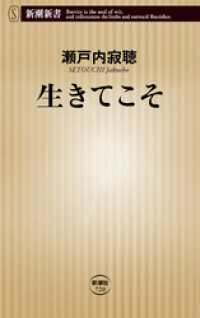- ホーム
- > 洋書
- > 英文書
- > Science / Mathematics
Full Description
How did life originate? Is there life beyond Earth? What is the future of life on our planet? The rapidly growing multidisciplinary field of astrobiology deals with life's big questions. This text harnesses the authors' two decades' experience of teaching acclaimed courses in astrobiology, and adopts a novel quantitative approach towards this emergent discipline. It details the physical principles and chemical processes that have shaped the origins and distribution of molecules, stars, planets, and hence habitable environments, life, and intelligence in the Universe. By synthesising insights from domains as diverse as astronomy and physics to microbiology, biochemistry, and geology, the authors provide a cutting-edge summary of astrobiology, and show how answers to many fundamental questions are drawing closer than ever. Geared towards advanced undergraduates and graduate students in the physical sciences, the text contains more than 150 innovative problems designed to enhance students' knowledge and understanding.
Contents
Part I. Astronomical Origins; 1. The foundations of astrobiology; 2. From the Big Bang to molecules; 3. Planet formation and migration; Part II. Earth; 4. Conditions on early Earth; 5. Origin(s) of life on Earth; 6. Co-evolution of life and environment on Earth; Part III. Habitability; 7. Instantaneous habitability; 8. Continuous habitability; Part IV. Astrobiological Targets; 9. Mars; 10. Icy worlds; 11. 'Exotic' life; 12. Detecting and characterising exoplanets; Part V. Detecting Life; 13. Biosignatures; 14. Technosignatures; Part VI. Futures; 15. The future of humankind; References; Author index; Subject index.







